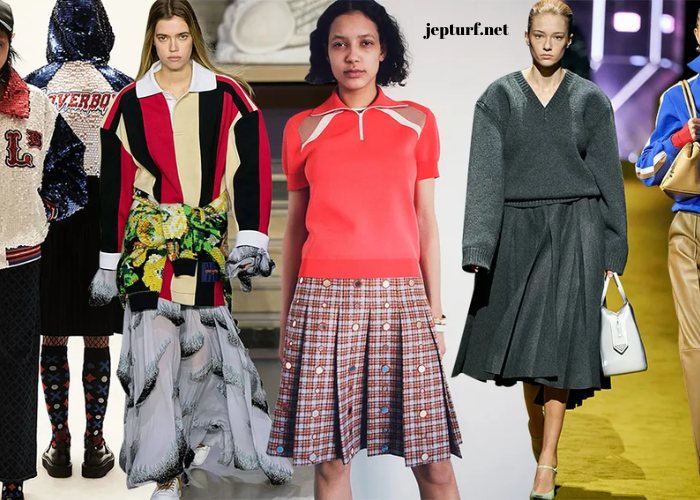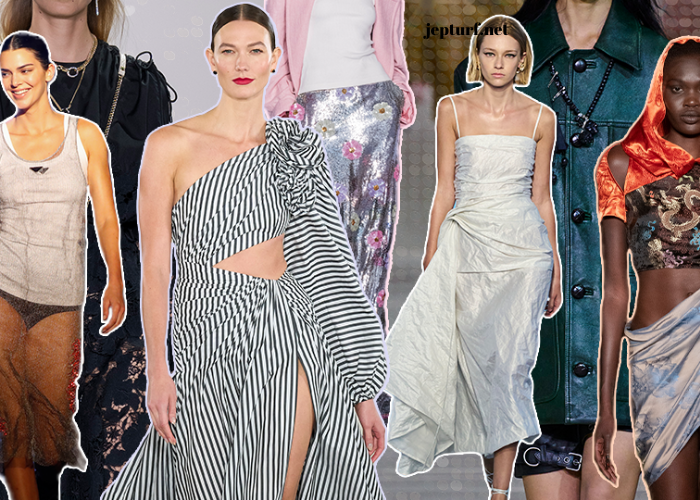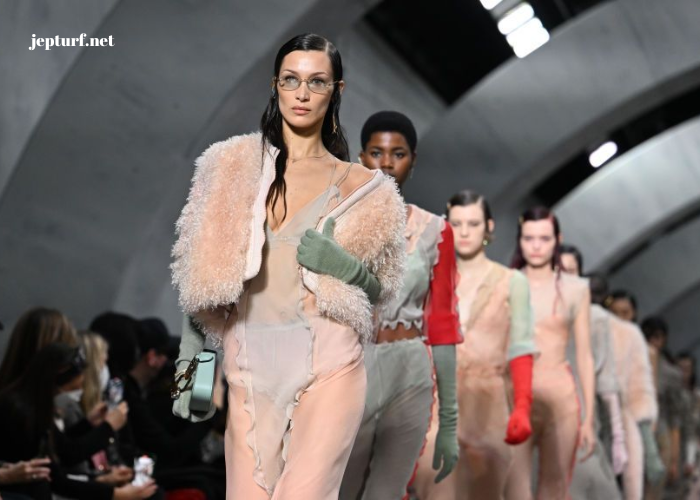Fashion is not just about the clothes we wear; it’s a form of self-expression, a canvas on which we paint our identity. In a world where words often fall short, fashion speaks volumes. It’s a language understood globally, transcending borders and cultures. This article delves into the intricate relationship between fashion and self-expression, exploring how what we wear weaves the threads of our identity.
Fashion as a Mirror of the Self
From the clothes we choose to the way we style our hair and the accessories we adorn ourselves with, fashion is an outward reflection of our inner selves. It is a mirror that we hold up to the world, offering a glimpse of who we are and what we value. In this sense, fashion is deeply personal, and its importance cannot be overstated.
When we select an outfit in the morning, we make choices that reveal our mood, our aspirations, and our cultural influences. A person who opts for a tailored suit may be expressing professionalism, while someone wearing vibrant, eclectic clothing might be showcasing their creativity and non-conformity. Each piece of clothing, each accessory, is a brushstroke on the canvas of our identity.
Fashion and Cultural Identity
Culture and fashion are intertwined, with each informing the other. The way we dress often reflects our cultural background and heritage. Traditional clothing, such as kimonos, saris, or kilts, are not just garments; they are symbols of culture, history, and identity. When individuals wear these items, they are making a statement about their roots and the importance of preserving their heritage.
Moreover, the fusion of cultures in fashion is a testament to the diversity and interconnectedness of our world. Today, it’s common to see people wearing garments and accessories inspired by different cultures. This blending of styles highlights the beauty of cultural exchange and can signify a person’s open-mindedness and appreciation for global diversity.
Fashion and Gender Identity
Fashion has long been a tool for challenging and redefining gender norms. It provides a platform for individuals to express their gender identity in a world that often seeks to pigeonhole people into rigid categories. The rise of gender-neutral fashion lines and the blurring of traditional gender boundaries in clothing have created space for people to express their true selves.
For instance, someone assigned male at birth might choose to wear dresses and makeup to express their identity as a transgender woman. Alternatively, a person might prefer to dress in a gender-neutral manner, sending the message that their identity cannot be defined by societal norms. Fashion, in this context, serves as a powerful form of self-assertion and a catalyst for social change.
Fashion and Personal Transformation
Fashion has the remarkable ability to empower and transform individuals. It can be a tool for personal growth, enabling people to become the best versions of themselves. Consider the phenomenon of a makeover: a change in wardrobe can boost confidence, change self-perception, and even alter how others perceive us.
For example, a person recovering from a difficult period in their life may use fashion as a means of redefining themselves and signaling to the world that they are moving forward. This transformation can be both symbolic and practical, helping individuals shed old identities and embrace new ones.
Fashion and Rebellion
Fashion has been a vessel for rebellion throughout history. It’s often through clothing that people voice dissent and challenge societal norms. In the 1920s, flappers rejected traditional gender roles and corseted fashion, opting for short dresses and bobbed hair. The punk movement of the 1970s used fashion to convey anti-establishment sentiments, with torn clothing, spikes, and vibrant hair colors becoming iconic symbols of rebellion.
Even today, fashion remains a means of protest and rebellion. Activists use clothing and accessories to make bold statements about political and social issues, from gender equality to climate change. In these instances, fashion becomes a form of protest art, allowing individuals to express their dissatisfaction with the status quo and advocate for change.
Fashion and Self-Discovery
Fashion is also a tool for self-discovery. As we experiment with different styles and clothing choices, we learn more about ourselves, our preferences, and what makes us feel comfortable and confident. This process of self-discovery through fashion is a journey of personal growth.
For young people, in particular, fashion can be a way to navigate the complexities of identity. Adolescence is a time of self-discovery, and fashion serves as a safe and expressive outlet. It allows individuals to experiment with different personas and styles as they search for their authentic selves.
Fashion in the Digital Age
The digital age has transformed the way we engage with fashion and self-expression. Social media platforms like Instagram and TikTok have become digital runways, where individuals showcase their unique styles and influence fashion trends globally. Fashion bloggers and influencers have risen to prominence, democratizing the industry and challenging conventional standards of beauty.
Online shopping has also revolutionized how we consume fashion. It’s now easier than ever to curate a wardrobe that aligns with our personal style and identity. The digital marketplace offers a vast array of options, from vintage and sustainable fashion to niche designers catering to specific tastes.
Sustainable Fashion: A New Expression of Values
In recent years, there has been a growing awareness of the environmental and ethical implications of fashion. Many individuals are now using their clothing choices to express their values and advocate for sustainability. Sustainable fashion, which prioritizes eco-friendly materials, fair labor practices, and responsible consumption, has become a way for people to align their personal values with their fashion choices.
By opting for sustainable fashion, individuals signal their commitment to environmental conservation and ethical treatment of workers in the fashion industry. This represents a shift in the way fashion is used for self-expression, moving beyond personal aesthetics to embrace a broader sense of responsibility and social consciousness.
Fashion and Confidence
Fashion can have a profound impact on our confidence and self-esteem. The right outfit can make us feel powerful, beautiful, and ready to conquer the world. This boost in confidence often translates into improved performance in various aspects of life, from work presentations to social interactions.
Moreover, the act of dressing up can be a form of self-care. Taking the time to select clothing that makes us feel good and reflects our personality is an act of self-love. It’s a reminder that we are deserving of care and attention, both from ourselves and from the world.
Fashion and Creativity
Fashion is an art form, and for many, it serves as a canvas for creativity. Whether it’s designing clothing, styling outfits, or experimenting with accessories, fashion enthusiasts engage in a creative process that allows them to express their unique vision and imagination.
Fashion designers, in particular, are akin to artists. They channel their creativity into the creation of clothing that becomes a part of someone’s identity. Each collection tells a story, conveys a message, and elicits emotions, just like a painting or a piece of music.
The Future of Fashion and Self-Expression
As we look to the future, the relationship between fashion and self-expression is poised to continue evolving. Technology, sustainability, and inclusivity will likely shape the fashion industry in profound ways.
Virtual and augmented reality may offer new avenues for self-expression through fashion. Imagine being able to virtually try on clothes before making a purchase or even creating entirely digital outfits for your online persona. These innovations could revolutionize the way we interact with fashion and express our identities.
Sustainability will also remain a central theme in the fashion world. As consumers become more conscious of their impact.



